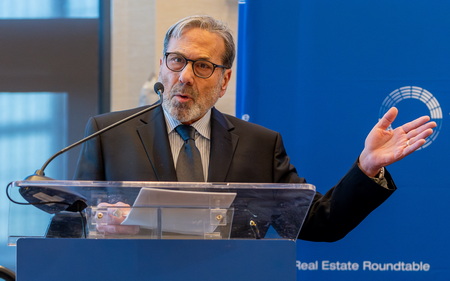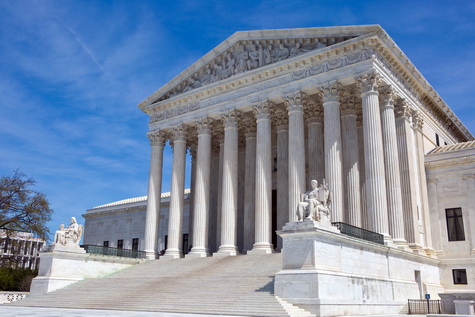
A bipartisan $79 billion tax package overwhelmingly approved this week by the House still faces potential hurdles in the Senate. The bill contains Roundtable-supported measures on business interest deductibility, bonus depreciation, and the low-income housing tax credit (LIHTC). (Associated Press, and Wall Street Journal, Jan. 31 | The Hill, Feb. 2)
Industry Support for House Bill
- On Wednesday, the House voted 357-70 to pass the Tax Relief for American Families and Workers Act of 2024 (H.R. 7024). House GOP leaders gained additional support for the bill by allowing a floor vote next week on the SALT Marriage Penalty Elimination Act (H.R. 7160), which would increase the cap on state and local tax deductions to $20,000 from $10,000 for married couples. (PoliticoPro and TaxNotes, Feb. 2)
- House Ways and Means Chairman Jason Smith (R-MO) and Senate Finance Committee Chairman Ron Wyden (D-OR) negotiated the larger tax package. Sen. Wyden and senior congressional staff discussed the legislation last week with Roundtable members during The Roundtable’s all-member 2024 State of the Industry Meeting in Washington. (Roundtable Weekly, Jan. 26)
- Last Friday, The Roundtable joined the National Multifamily Housing Council (NMHC) and a large coalition of housing and other real estate groups in a letter to Congress in support of the tax bill. The letter focused on the bill’s important improvements to the low-income housing tax credit, which will significantly increase the construction and rehabilitation of affordable housing over the next 3 years. (Coalition letter, Jan. 26)
Tax Measures Face Senate Scrutiny

- In the Senate, the House-passed tax bill faces an uncertain path forward. Senate Finance Committee Ranking Member Sen. Mike Crapo (R-ID) and other Republican Senators have raised concerns regarding the lack of a work requirement for the child credit, the cost, the proposed pay-for, and other aspects of the bill. Senate Minority Whip John Thune (R-SD) added the bill would not be able to clear a possible Senate filibuster without amendment votes. (The Hill, Feb. 2)
- Provisions in the House tax bill affecting real estate include:
- Low-Income Housing Tax Credit
A Roundtable-supported three-year extension (2023–2025) of the 12.5 percent increase in LIHTC allocations to states. The bill also reforms LIHTC’s tax-exempt bond financing requirement, which will allow more affordable housing projects to receive LIHTC allocations outside of the state cap. - Business Interest Deductibility
A retroactive, four-year extension (2022–2025) of the taxpayer-favorable EBITDA standard for measuring the amount of business interest deductible under section 163(j). The changes do not alter the exception to the interest limitation that applies to interest attributable to a real estate business. - Bonus Depreciation
Extension of 100 percent bonus depreciation through the end of 2025. As under current law, leasehold and other qualifying interior improvements are eligible for bonus depreciation. In 2026, bonus depreciation would fall to 20 percent and expire altogether after 2026.
- Low-Income Housing Tax Credit
Other provisions in the agreement include reforms to the child tax credit, the expensing of R&D costs, disaster tax relief, a double-taxation tax agreement with Taiwan, and a large pay-for that creates significant new penalties for abuse of the employee retention tax credit (ERTC) rules and accelerates the expiration of the ERTC.
# # #



















